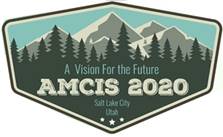Loading...
Abstract
Smart cities are connected communities which rely on intelligently networked objects and devices to collect data (Harbers et al., 2015). This data is then wirelessly transferred over the internet to cloud-based applications that receive, analyze, and manage the data. Smart cities can pair their smart devices and data with their physical infrastructure, such as traffic lights, bus routes, and parking, to cut costs and improve sustainability. They are recognized as promising urban areas which will improve the quality of life for their citizens and increase the efficiency of their resources. Many citizens can get access to IoT devices through apps on their mobile phones, however, people with disabilities, who are in most need of engaging with these smart technologies to navigate through cities, are frequently unable to access these tools. They are often times ignored when it comes to the design, development, and implantation of smart city technology and the apps that manage them. Currently, minimal research exists on smart cities and their impact on people with disabilities. Though some aspects of smart cities, such as the utilization of the Internet of things (IoT), Information Communication Technology (ICT), and machine learning, have received attention in the information technology discipline, there is a lack of any research that takes the perspective of how these cutting-edge technologies will impact the lives of smart city dwellers with disabilities. This study employs the Quadruple Helix Model (Figure 1), a conceptual model which includes four main sectors, citizens, industry, university and government (Arnkil et al., 2010), to study how smart cities can and should engage and plan for people with disabilities using their smart city. The Quadruple Helix Model is a helpful theoretical framework which takes into account the many stakeholders in building a smart city, including those with disabilities. Our research question is focused on: (1) how do people with disabilities engage in their cities; (2) what are the issues they encounter when engaging in city activities; (3) how do city governments engage citizens with disabilities in their development and procurement of smart technologies; (4) how do business and universities developing and procuring smart technologies engage citizens with disabilities in their development and procurement of smart technologies; and (5) how could smart technologies be developed to ensure they consider the needs of people with disabilities living in smart cities. We are looking for feedback regarding the research study.
Recommended Citation
ZHOU, SHIMI and Loiacono, Eleanor, "Smart Cities for All" (2020). AMCIS 2020 TREOs. 28.
https://aisel.aisnet.org/treos_amcis2020/28
Abstract Only
When commenting on articles, please be friendly, welcoming, respectful and abide by the AIS eLibrary Discussion Thread Code of Conduct posted here.


